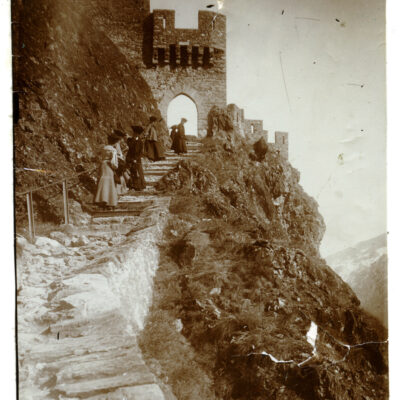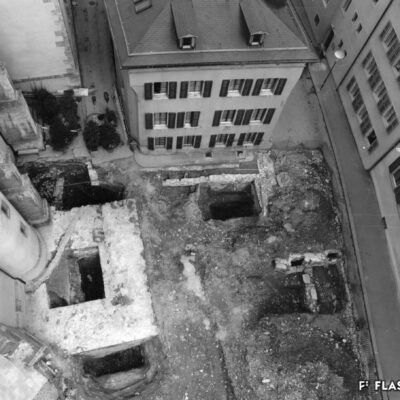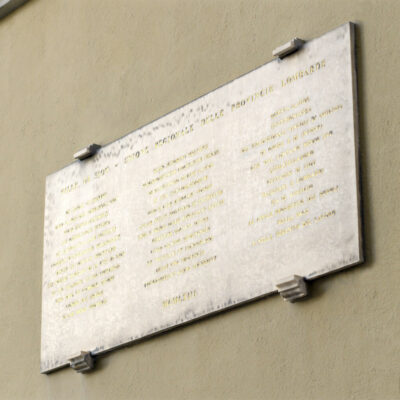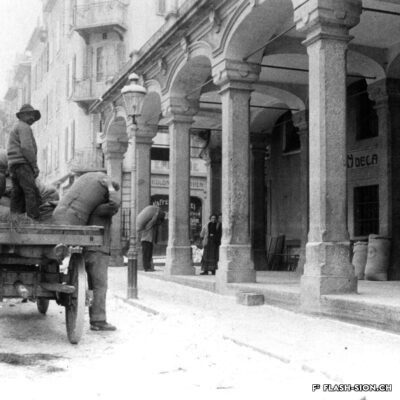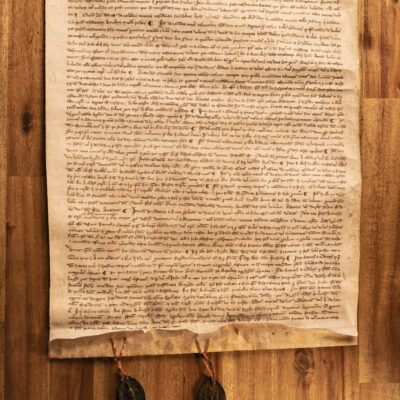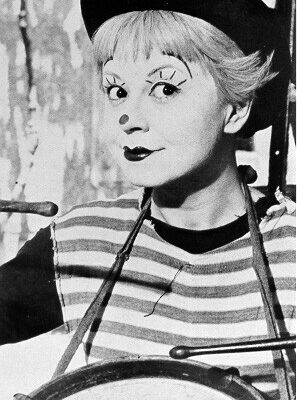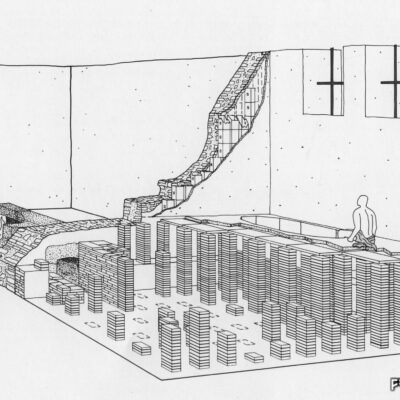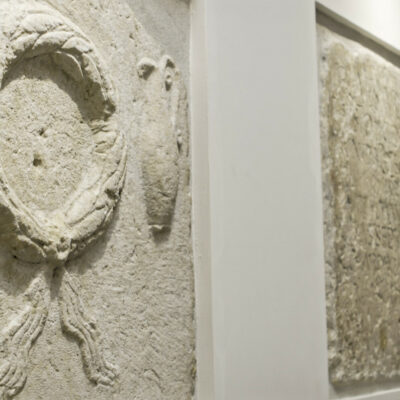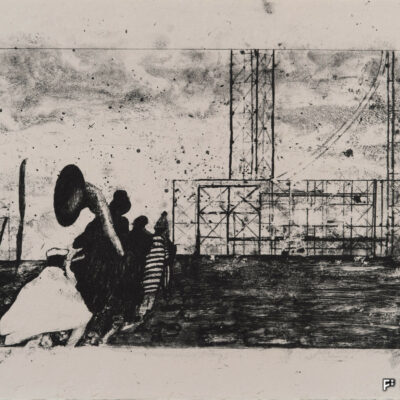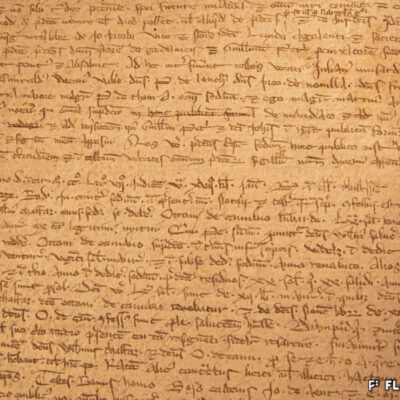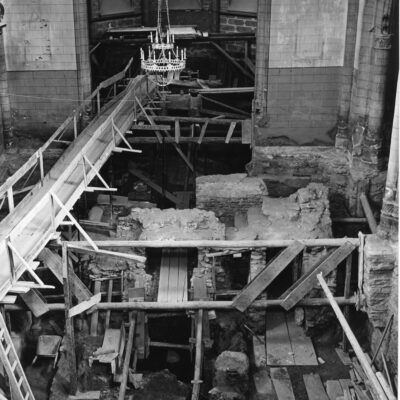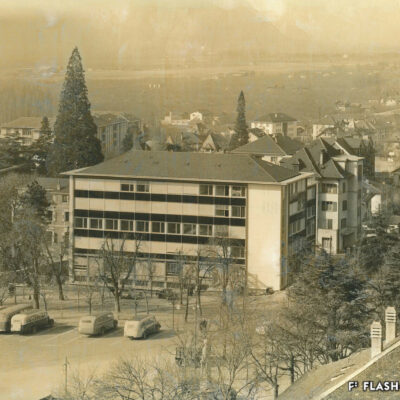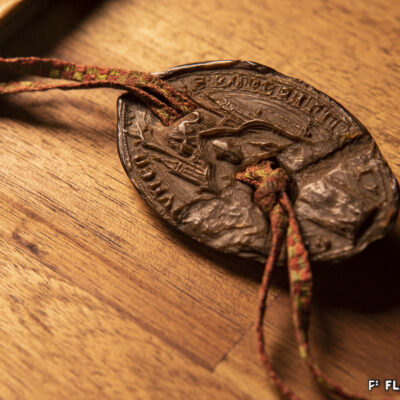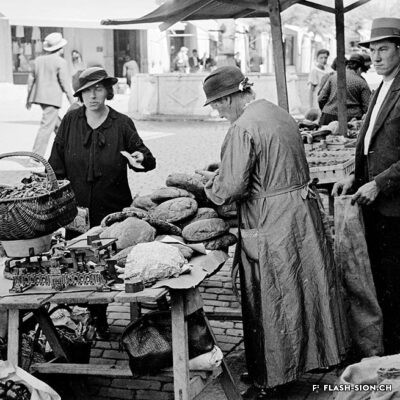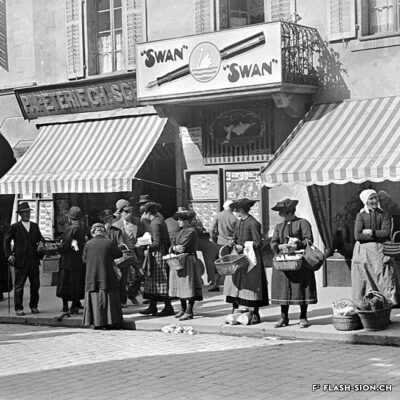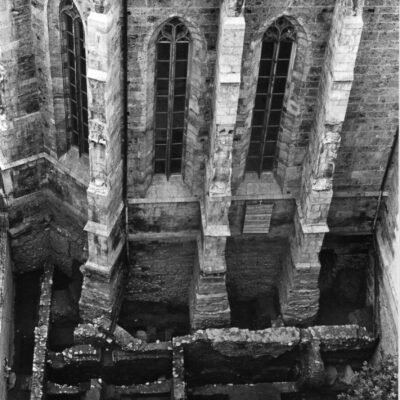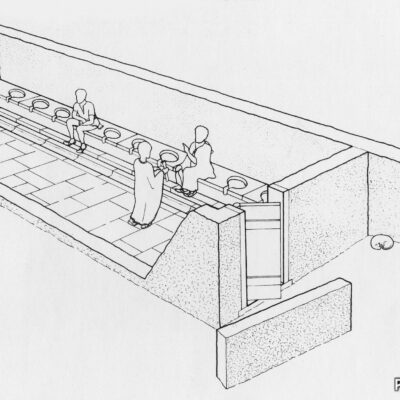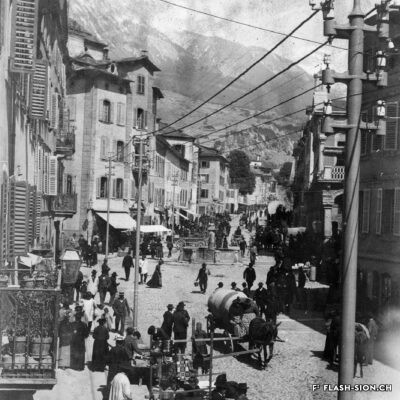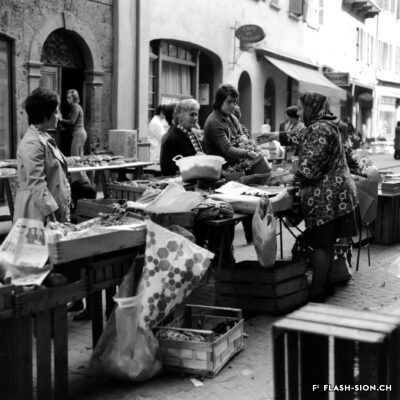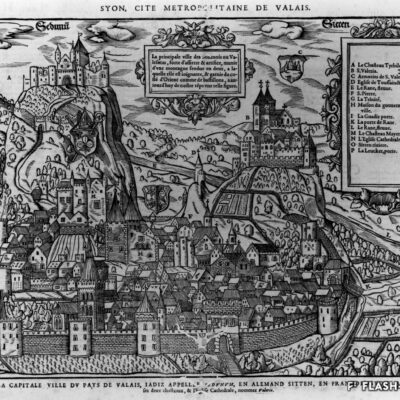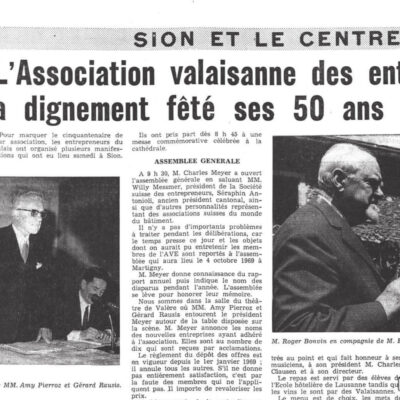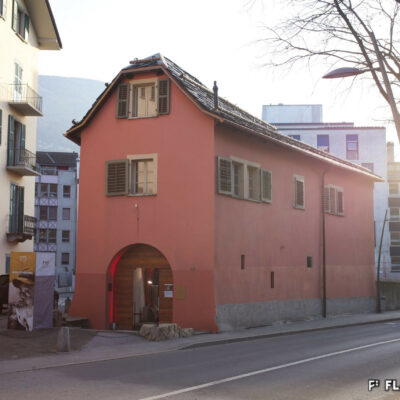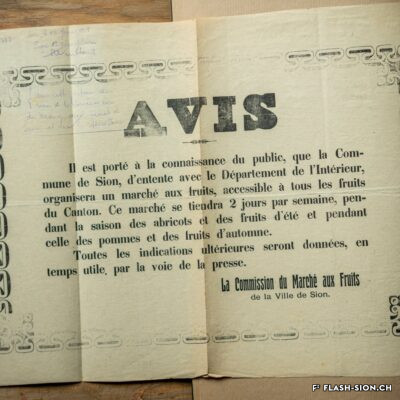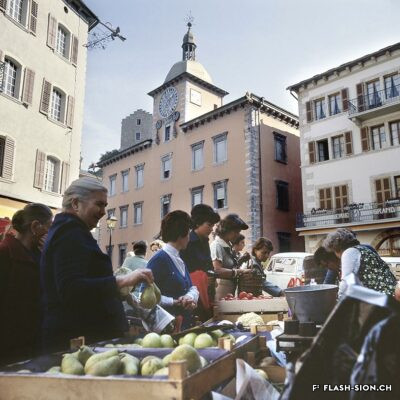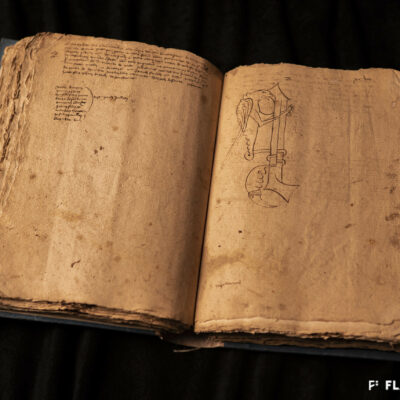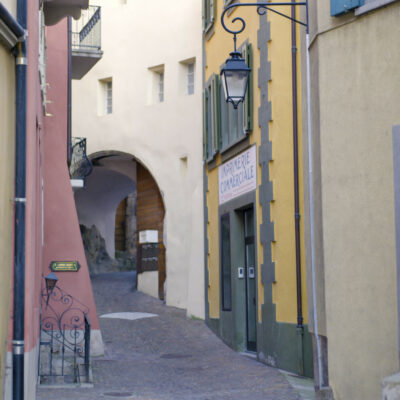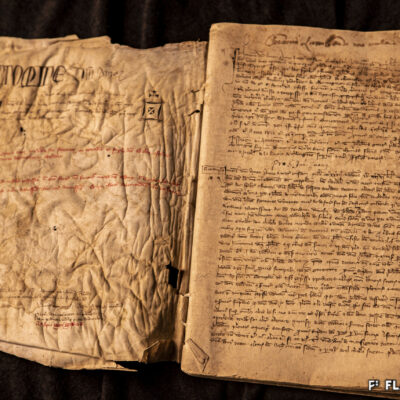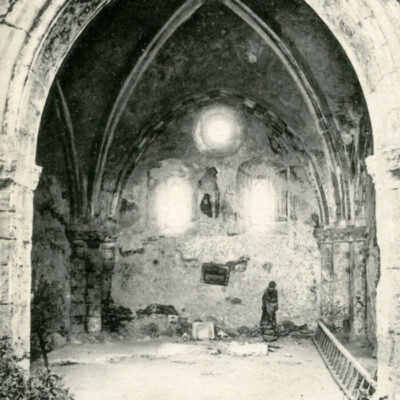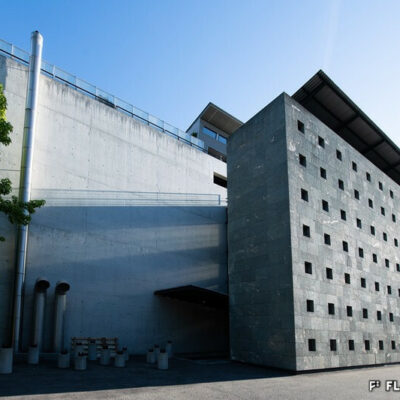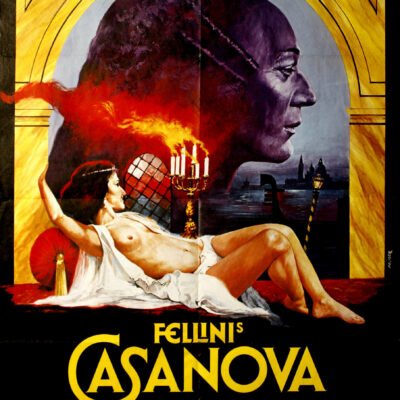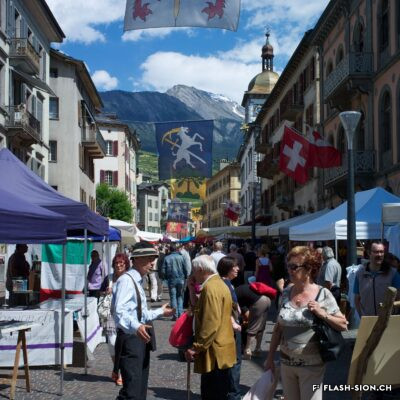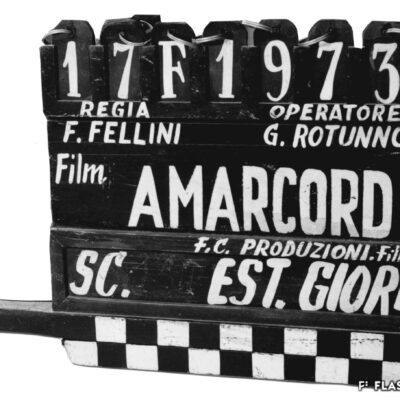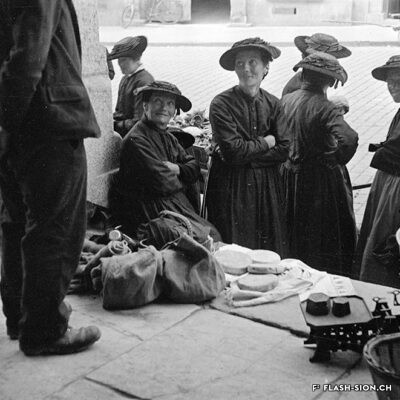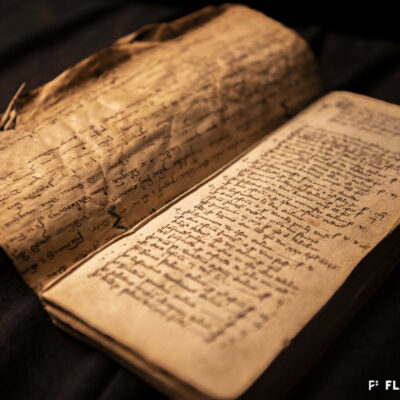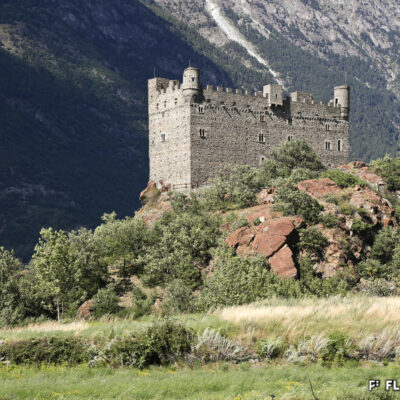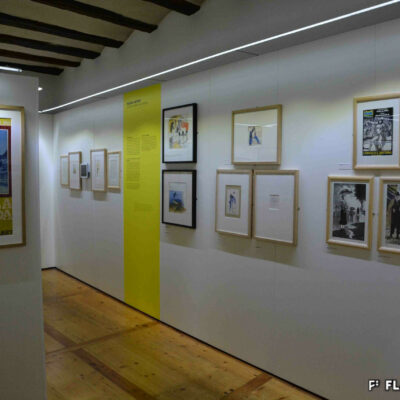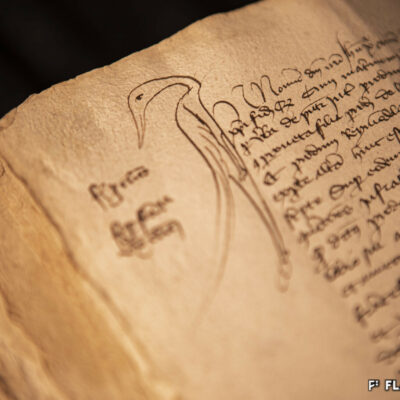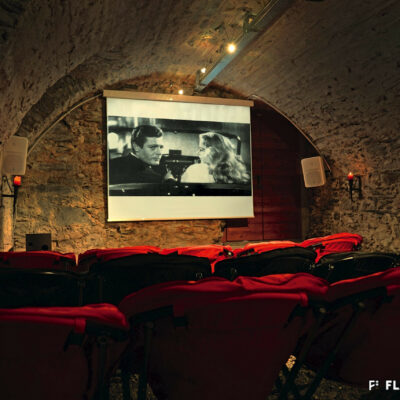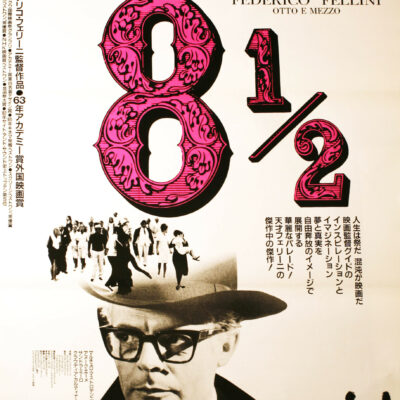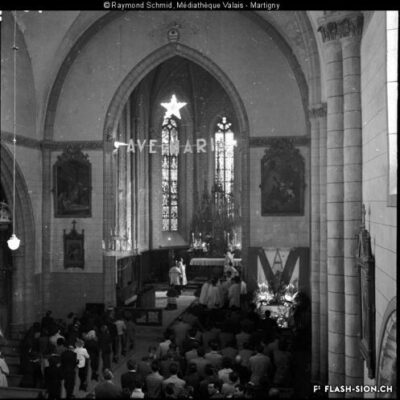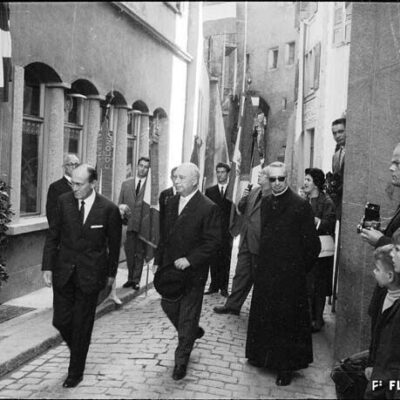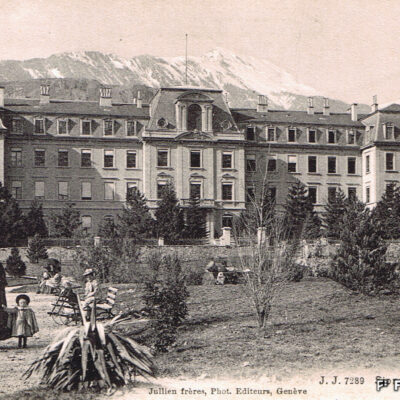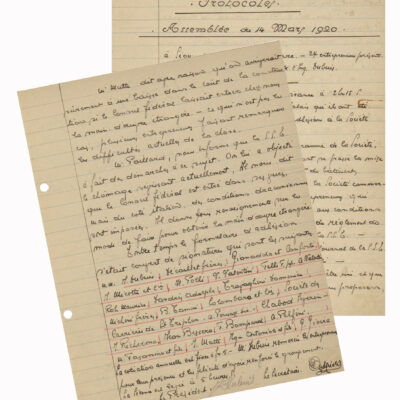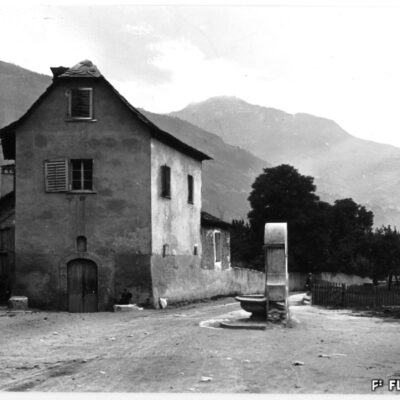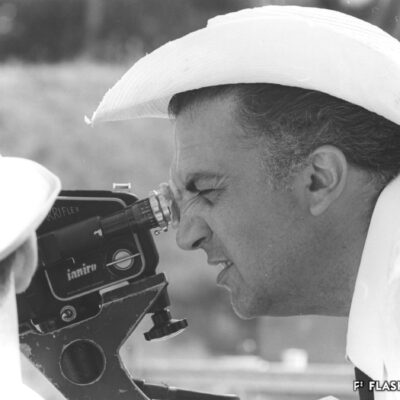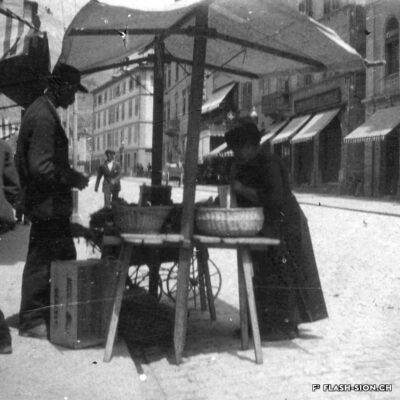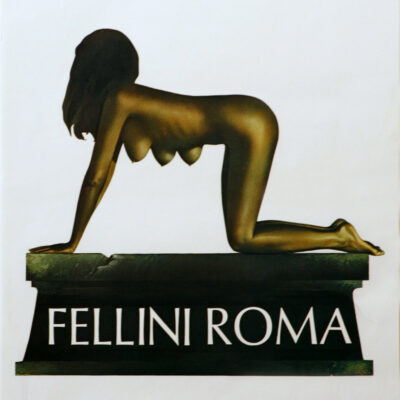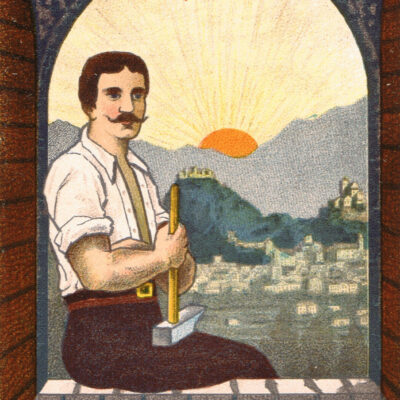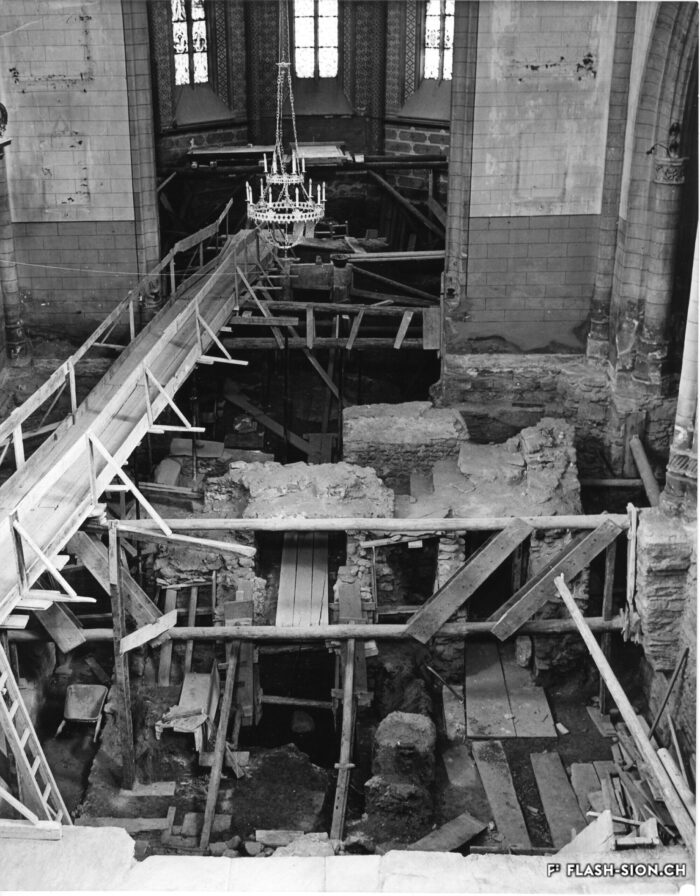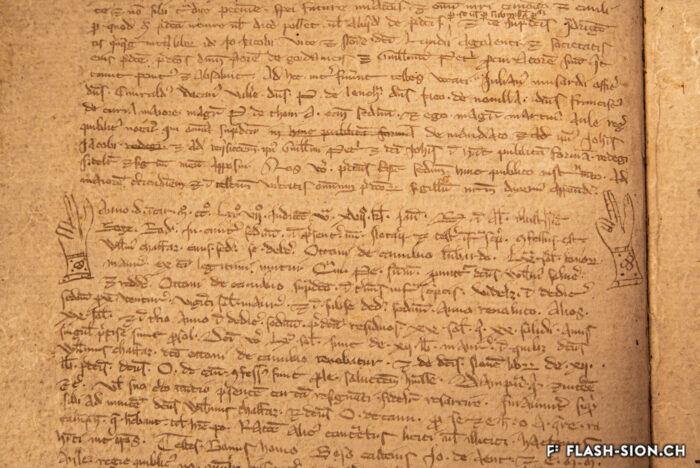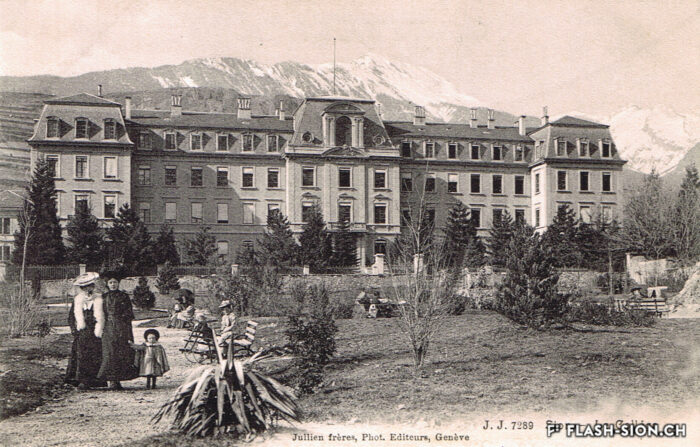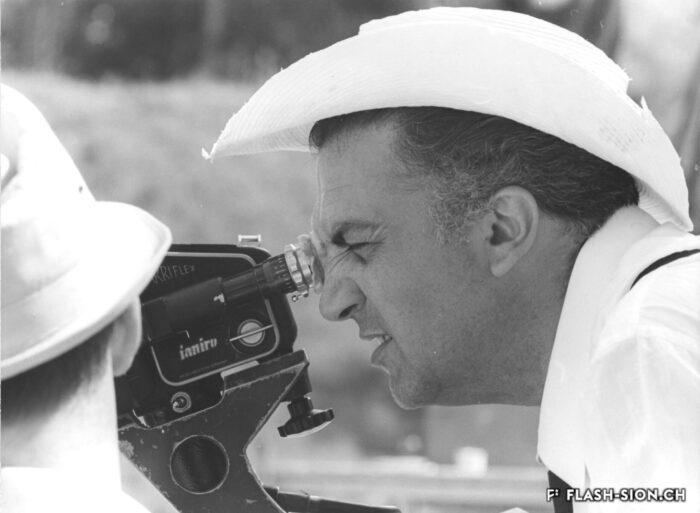Du culte du corps aux lieux de culte
Les fouilles archéologiques de St-Théodule au début des années 1960 révèlent une surprise de taille ! Sous l’église gothique actuelle, œuvre de reconstruction inachevée de l’illustre maître-maçon transalpin Ulrich Ruffiner, les archéologues découvrent non seulement les ruines de trois édifices religieux antérieurs, mais également les vestiges de thermes romains. Infrastructure balnéaire caractéristique de la vie sociale de la Rome antique, les thermes publics étaient placés à côté du forum. Ainsi, l’hypothèse de la présence d’une place publique au Glarier sous l’Empire romain est aujourd’hui avancée par les spécialistes.
Vom Köperkult zum Kultort
Die archäologischen Ausgrabungen von St.Theodul Anfang der 1960er Jahre hielten eine grosse Überraschung bereit! Unter den Mauern der bestehenden gotischen Kirche, die auf ein unvollendetes Projekt des berühmten Maurermeisters Ulrich Ruffiner zurückführt, entdeckten Archäologen nicht nur die Ruinen von drei früheren Sakralbauten, sondern auch Überreste einer römischen Therme. Die für das gesellschaftliche Leben im alten Rom charakteristische Badeinfrastruktur befand sich gewöhnlich neben dem Forum. So vertreten Wissenschaftler heute die Hypothese, dass während des römischen Reichs das Zentrum der Siedlung in Glarier gelegen haben könnte.
Cleanliness is next to godliness
The archaeological excavations at the church of St. Theodulus in the early 1960s uncovered a major surprise! Beneath the present-day Gothic church (an unfinished reconstruction by the renowned Italian master mason Ulrich Ruffiner), the archaeologists discovered not only the ruins of three earlier religious buildings, but also the remains of Roman baths. The public baths were a typical feature of social life in ancient Rome, and they were usually located beside the forum. This discovery has now prompted experts to suggest that there was a public square in Sion’s Glarier district under the Roman Empire.
Dal culto del corpo ai luoghi di culto
Gli scavi archeologici presso St-Théodule, all’inizio degli anni 60, svelano una sorpresa notevole! Sotto la chiesa gotica attuale, opera di ricostruzione incompiuta dell’illustre capomastro transalpino Ulrich Ruffiner, gli archeologi scoprono non solamente le rovine di tre edifici religiosi antecedenti ma anche vestigi di terme romane. Infrastruttura balneare caratteristica della vita sociale della Roma antica, le terme pubbliche erano collocate accanto al foro. Pertanto, oggi gli specialisti avanzano l’ipotesi della presenza di una piazza pubblica al Glarier sotto l’Impero Romano.
Des Lombards à Sion
A Sion, la présence de Lombards est attestée dès le 13e siècle. Actifs dans la banque et le commerce, ils prennent part au développement de la vie économique et politique sédunoise. Pourtant, la mention du quartier « en Lombardie » n’apparaît dans les écrits qu’à partir du 17e siècle, soit plusieurs siècles après leur installation. La rue qui porte leur nom est un hommage tardif. Une plaque commémorative posée au début de la rue de la Lombardie renforce encore ce souvenir des liens qui unissent le Valais et la Lombardie.
Lombarden in Sitten
In Sitten ist die Präsenz von Lombarden ab dem 13. Jahrhundert belegt. Sie betätigten sich als Kaufleute und Bankiers und waren massgeblich an der politischen und wirtschaftlichen Entwicklung der Stadt beteiligt. Der Name des Stadtteils “en Lombardie” tritt jedoch erst im 17. Jahrhundert in den Schriften auf. Die Strasse, die heute ihren Namen trägt, ist eine späte Hommage. Am Anfang der Rue de la Lombardie erinnert eine Gedenktafel an die Beziehungen zwischen der Lombardei und dem Wallis.
Lombards in Sion
There is evidence that Lombards were present in Sion from the 13th century onwards. They played an active part in banking and commerce, and they contributed to the development of Sion’s economic and political life. However, the city district known as “en Lombardie” is not mentioned in documentation until the 17th century – several centuries after the Lombards settled here. The street that bears their name is a belated tribute. A commemorative plaque installed at the start of Rue de la Lombardie is another reminder of the bonds that link Valais and Lombardy.
I lombardi a Sion
A Sion, la presenza dei lombardi è confermata dal 13° secolo. Attivi nel settore bancario e commerciale, prendono parte allo sviluppo della vita economica e politica di Sion.
Ciò nonostante, la menzione del quartiere “in Lombardia” appare negli scritti solo dal 17° secolo, ossia molti secoli dopo il loro insediamento. La via, che porta il loro nome, è un omaggio tardivo. Una targa commemorativa installata all’inizio della via “rue de la Lombardie” rafforza maggiormente il ricordo dei legami tra il Vallese e la Lombardia.
Un évêque valdôtain
Boniface de Challant, évêque de Sion de 1290 à 1308, est originaire de l’une des familles les plus puissantes du Val d’Aoste. Sachant manier avec énergie et fermeté la crosse et l’épée, il commandite la construction du château de Tourbillon, érigé au tournant du 13e siècle. Il s’inscrit ainsi dans la tradition familiale de « bâtisseurs de châteaux-forts », les Challant ayant déjà fait édifier de nombreuses forteresses dans leur vallée d’origine.
Ein Bischof aus dem Aostatal
Der zwischen 1290 und 1308 als Bischof von Sitten amtierende Bonifaz de Challant stammte aus einer der einflussreichsten Familien des Aostatals. Er handhabte Bischofsstab wie Schwert mit Tatkraft und Entschlossenheit und blieb der Familientradition der “Burgenbauer” treu. Gelten doch die Challants als Auftraggeber zahlreicher Festungen in ihrer Heimatregion. Der Bau der Burganlage von Tourbillon, die um die Wende des 13. Jahrhunderts entstanden ist, wird allgemein Bonifaz de Challant zugeschrieben.
A bishop from Val d’Aosta
Boniface de Challant, Bishop of Sion from 1290 to 1308, came from one of the most powerful families in Val d’Aosta. As a vigorous and resolute wielder of the crook and the sword, he sponsored the construction of Tourbillon Castle, built at the turn of the 13th century. In so doing, he followed the family tradition of “builders of fortified castles”: the Challant family had already commissioned many fortresses in their home valley.
Un vescovo valdostano
Bonifacio di Challant, vescovo di Sion dal 1290 al 1308, proviene da una delle famiglie più potenti della Valle d’Aosta. Sapendo maneggiare con forza e fermezza il pastorale e la spada, commissiona la costruzione del castello di Tourbillon, eretto al volgere del 13° secolo. S’iscrive così a pieno titolo nella tradizione familiare dei “costruttori di fortezze”, visto che gli Challant avevano già fatto edificare numerose fortezze nella loro valle d’origine.
La construction dans les gènes
Depuis l’Antiquité, bâtisseurs, maître-maçons et entrepreneurs italiens marquent la construction en pierre de la cité sédunoise et du Valais. Reconnus pour leur savoir-faire artisanal et leur force de travail exemplaires, des entrepreneurs italiens feront également partie, en 1919, des membres fondateurs de l’Association Valaisanne des Entrepreneurs. Si ces « étrangers » seront perçus comme une menace lors des grandes crises économiques du 20e siècle, le secteur de la construction compte aujourd’hui encore de nombreux entrepreneurs d’origine transalpine.
Das Bauwesen im Blut
Seit der Antike prägen italienische Baumeister, Maurermeister und Unternehmer die Steinbauweise der Stadt Sitten und des Wallis. Bekannt für ihr handwerkliches Können und ihre unermüdliche Arbeitskraft, gehören 1919 ebenfalls italienische Baumeister zu den Gründungsmitgliedern des Walliser Baumeisterverbandes. Zwar werden diese “Fremdarbeiter” während den grossen Wirtschaftskrisen des 20. Jahrhunderts als Bedrohung wahrgenommen, doch prägen noch heute zahlreiche italienischstämmige Unternehmer den Bausektor.
Building is in their genes
Since ancient times, Italian builders, master masons and contractors have left their mark on the stone architecture that typifies the city of Sion and Valais canton. Italian contractors were renowned for their craftsmanship and their outstanding labour force; in 1919, they were also among the founding members of the Valais Association of Building Contractors. These “foreigners” were viewed as a threat during the major economic crises of the 20th century, but today’s construction sector still includes many contractors who trace their origins to the southern side of the Alps.
L’edilizia nei geni
Dall’antichità, costruttori, capimastri e imprenditori italiani segnano il settore della costruzione in pietra della città di Sion e del Vallese. Riconosciuti per il loro know-how, le loro competenze nell’artigianato e la loro forza lavoro esemplari, gli imprenditori italiani faranno parte nel 1919 dei membri fondatori dell’Associazione vallesana degli Imprenditori. Se questi “stranieri” sono considerati come una minaccia durante le grandi crisi economiche del 20° secolo, il settore dell’edilizia conta ancora oggi numerosi imprenditori di origine transalpina.
Evviva il Maestro
L’œuvre du réalisateur italien Federico Fellini est au cœur des activités de la Fondation Fellini pour le cinéma. Cette dernière possède un fonds de plus de 15’000 documents dont les 2/3 environ concernent l’œuvre du maestro. Depuis sa création en 2001, cette fondation organise des expositions en Suisse et à travers le monde. Elle permet ainsi au public de découvrir la richesse du travail du réalisateur en mettant en évidence les liens entre cinéma, littérature, photographie, architecture et musique. L’espace culturel ouvert en 2011 à la Maison du Diable apporte une touche méridionale supplémentaire à Sion.
Evviva il Maestro
Das Werk des italienischen Regisseurs Federico Fellini steht im Mittelpunkt der Aktivitäten der Stiftung Fellini. Diese verfügt über eine Sammlung von über 15’000 Dokumenten, von denen etwa zwei Drittel die Arbeit des Maestros betreffen. Seit ihrer Gründung im Jahr 2001 organisiert die Stiftung Ausstellungen in der Schweiz und auf der ganzen Welt. Ziel ist es, den Reichtum des Werkes des Regisseurs in Zusammenhang mit Kino, Literatur, Fotografie, Architektur und Musik aufzuzeigen. Mit der Eröffnung des Kulturraums in der “Maison du Diable” im Jahr 2011 erhielt Sittens südlicher Einschlag eine weitere Bereicherung.
Evviva il Maestro
The Fellini Foundation for Cinema focuses on the work of Federico Fellini, the Italian film director. It owns a collection of over 15,000 documents, about two thirds of which relate to the maestro’s work. The Foundation has staged exhibitions in Switzerland and across the globe since it was set up in 2001. It enables the public to explore the wealth of the director’s work by highlighting links between the cinema, literature, photography, architecture and music. The cultural centre, opened in 2011 at the Maison du Diable, brings yet another hint of the South to Sion.
Evviva il Maestro
L’opera del regista italiano, Federico Fellino, è il fulcro delle attività della Fondazione Fellini per il cinema. Quest’ultima possiede una collezione di più di 15’000 documenti, i cui 2/3 circa riguardano l’opera del maestro. Dalla sua nascita, nel 2001, la fondazione organizza delle mostre in Svizzera e attraverso il mondo. Permette in tal modo al pubblico di scoprire la ricchezza del lavoro del regista mettendo in risalto i legami tra cinema, letteratura, fotografia, architettura e musica. Lo spazio culturale aperto nel 2011 alla Casa del Diavolo offre un tocco meridionale rilevante a Sion.
La convivialité dans le panier
Dès le Moyen Age, les foires annuelles et concours de bétail animent la cité. Rythmant les saisons au gré des marchandises, les marchés des 19e et 20e siècles drainent un public varié et reconnectent la plaine à la montagne, ainsi que les clients aux producteurs et aux marchands. Qualité, prix et poids des marchandises sont contrôlés et les stands réglementés. Situé au cœur de la ville, le marché est alors un acteur principal de l’économie locale. Après un désintérêt progressif dès la seconde moitié du 20e siècle, le marché renaît en 2003, à l’initiative de l’Association des habitants de la vieille ville. Renouant avec la tradition, l’événement hebdomadaire très fréquenté atteste de sa grande attractivité. Devenu incontournable, le marché de la vieille ville s’affirme aujourd’hui comme lieu de rencontre et de convivialité.
Ein Marktkorb voller Geselligkeit
Seit dem Mittelalter beleben Jahrmärkte und Viehschauen die Stadt. Das rein saisonale Angebot auf den Wochenmärkten des 19. und 20. Jahrhunderts veranschaulicht den Lauf der Jahreszeiten, zieht ein vielfältiges Publikum an, verbindet die Seitentäler mit der Rhoneebene, sowie die Käufer mit den Produzenten und Händlern. Qualität, Preis und Gewicht der Waren werden kontrolliert und die Stände sind reglementiert. Mitten in der Stadt angesiedelt, entwickelt sich der Wochenmarkt zu einem der wichtigsten Zweige der lokalen Wirtschaft. In der zweiten Hälfte des 20. Jahrhunderts verliert der Markt zusehends an Bedeutung, bis er 2003 auf Initiative des Altstadt-Quartiervereins schliesslich wieder auflebt. Heute knüpft der Wochenmarkt gebührend an seine Tradition an und die vielen Besucherinnen und Besucher zeugen von seiner Attraktivität. Die Veranstaltung ist zu einem wöchentlichen Treffpunkt geworden, wo das gesellige Beisammensein im Vordergrund steht.
Conviviality in the basket
Since the Middle Ages, annual fairs and livestock competitions have brought life to the city. Throughout the seasons and their related produce, the markets of the 19th and 20th centuries attracted a varied public and connected the plain to the mountains, as well as customers to producers and merchants. The quality, price and weight of the goods were controlled, and the stalls were regulated. Situated in the heart of the city, the market became a major player in the local economy. After a gradual loss of interest in the second half of the 20th century, the market was revived in 2003 thanks to the initiative of the Association of the inhabitants in the old town. The weekly event, which is very well attended, is a revival of tradition and has become a major attraction. The market in the old town has become a must and is now a place where people meet and socialise.
Convivialità nel carrello
Fin dal Medioevo, le fiere annuali e i concorsi di bestiame hanno animato la città. Le stagioni erano scandite dalle merci proposte, i mercati del XIX e XX secolo hanno portato un pubblico variegato e hanno ricollegato la pianura alla montagna, nonché i clienti ai produttori e ai commercianti. La qualità, il prezzo e il peso delle merci erano controllati e gli stand regolamentati. Situato nel cuore della città, il mercato divenne un attore importante dell’economia locale. Dopo una graduale perdita di interesse nella seconda metà del XX secolo, il mercato è stato rilanciato nel 2003 su iniziativa dell’Association des habitants de la vieille ville (Associazione degli abitanti del centro storico). L’evento settimanale, molto frequentato, è un ritorno alla tradizione e testimonia la sua grande
